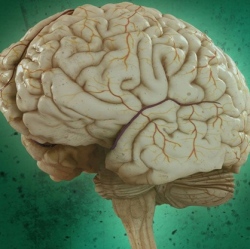
The Allen Institute announced the release of the Allen Brain Observatory. This is standardized survey of cellular-level activity in the mouse visual system. The goal is to empower scientists to “investigate how circuits in the behaving mouse brain coordinate to drive activity and perception, and lays a crucial foundation for brain understanding.
The Allen Institute is known for its comprehensive brain atlases, with deep, high-quality data sets revealing where genes are expressed and how cells and connections are arranged in the mouse and human brain, according to Allan Jones, Ph.D., CEO of the Allen Institute.
With this new project, the researchers took a clever approach, combining a large variety of visual stimuli, including film clips and moving images, with the associated responses of neurons in four areas of the mouse visual cortex at multiple depths, sampling more than 18,000 neurons in total. The goal is to determine the “tuning,” or preference, of each individual neuron to visual features like motion and shape orientation, as well as complex images like natural scenes and movies that reveal integrative dynamics of visual processing.
The data are presented as part of the suite of Allen Brain Atlas tools in the uniform and shareable Neurodata Without Borders file format, which allows scientists anywhere to easily mine and model the data. (The mouse is an important model system often used to understand the far less accessible and far larger human brain.) The data are presented in a novel visualization format through the Allen Brain Atlas data portal, and are accompanied by analysis tools and access to all raw data, which allows scientists to deeply explore the rules that govern how networks of cells in the visual cortex communicate.
“The Allen Brain Observatory is a stunning window into the visual brain of the mouse,” says Christof Koch, Ph.D., President and Chief Scientific Officer of the Allen Institute for Brain Science. “No one has ever taken this kind of standardized approach to surveying the active brain at cellular resolution in order to measure how the brain processes information in real time. This is a milestone in our quest to decode how the brain’s computations give rise to perception, behavior, and consciousness.
“Just like in astronomy, modelers and theoreticians worldwide can now study this wealth of data using their own analysis tools. If we want to understand higher-order brain functions, we need to understand not just the individual components of the brain but how they all work together.”
Understanding visual processing is a key gateway to understanding how other parts of the brain process information, and future releases of the Allen Brain Observatory will also explore the neural circuits that underlie more complex behaviors like decision-making, according to the researchers.
